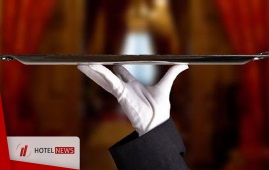
When are groups coming back? This is undoubtedly a question on many hoteliers’ minds, but perhaps the better question is, how are you going to manage operations when they do come back? Right now, the industry is narrowly focused on two central issues – the post-pandemic surge in leisure guests (as epitomized by the concept of ‘revenge travel’) and the labor shortages resulting from so many furloughed staffers permanently leaving the industry (amongst other factors). Both of these matters not only influence the groups segment, but also compound many of their underlying problems. To help navigate the impact of these two issues to realize big revenue gains from the upcoming return of groups, we recruited Steve Anevski, CEO and Co-Founder of Upshift (www.upshift.work), an on-demand staffing platform with the backing of Recruit Holidings (parent company of Indeed). The company has experienced tremendous growth in the past two quarters, particularly as Upshift’s ability to properly vet then deliver high quality shift workers gives hotels the assurance they need to effectively facilitate events once more Revenge Travel for Groups To the first of these concerns, the psychology of revenge travel, in combination with general stir-craziness and what’s dubbed ‘mortality salience’, will compel a tremendous swarm of newly confident leisure guests to venture forth come Q3 2021 based on current vaccination rates and governmental decrees. As we discussed with Anevski, these same compulsions, however, will invariably lead to a swell in groups, albeit following a different pattern than what comprised group travel in 2019. While we can all look enviously at the sold-out rock concerts and rugby matches in Australia, the large-scale, international MICE happenings of yesteryear will take some time to properly come back for the rest of the world. Yet right now, discussions amongst friends of colleagues are already taking place along the lines of, “Hey, we’re all vaccinated now and they’re saying it’s safe to gather in small groups, so let’s start planning something for this fall because we all haven’t seen each other in a long time.” This may not yet be revealed by travel search inquiries or, say, a year-over-year increase in total RFPs for a given territory, but we can nevertheless infer how groups will return. In lieu of conventions, companywide town halls and 200-or-more attendee receptions, think intimate weddings, family reunions, hub-and-spoke hybrid meetings and senior level-only corporate retreats. Importantly, because of the spontaneousness that underpins revenge travel, these smaller group bookings will have vastly shorter lead times from inquiry and contract to actual event date.Managing the Nightmare of Upcoming Events So, let’s list off all the problems that a hotel may encounter in trying to rebuild its group segment in Q3 and Q4 2021: Smaller groups, meaning more management time required to negotiate all of these at the same time then juggle room blocks and coordinate all specific requirements Dire shortages of shift-based labor caused in large part by people leaving the industry as a direct result of the pandemi Drastically shorter lead times for event bookings as groups opt to rush back with something in the near-term and release that pent-up demand New SOPs related to COVID-19 safety, compounding each group’s specific requirements and mandating more team training Inability to bring back many full-time, fixed-cost employees due to the increased carrying debt from a disastrous 2020, the still-depressed revenue on the books and an inability to accurately forecast the shape of an individual hotel’s occupancy recovery Together, these five factors can make hosting an event a nightmare to effectively render (and create a slew of financial headaches if an event isn’t rendered properly) or outright untenable for some properties. To respond to these market conditions, hotels must remain nimble and recruit labor on an as-needed basis much like how revenue managers yield rates in the face of compression. Labor Tech to the Rescue Maintaining a mostly variable labor force in name of being able to accept group bookings creates a critical problem in terms of how to source and motivate these shift workers. That’s where new-age platforms like Upshift come in, where many veteran banquet workers, as Anevski pointed out, have already signed up so that they are more visible and available for hire on-demand. For 2019 and earlier, variable labor demands were addressed by temp agencies. Like so many other aspects of business, though, the pandemic has brought to light the inherent fallacies of these third parties. Notably, temp accountability was always suscept; hotels would receive workers of questionable training and demeanor, and without the ability to validate quality ahead of a given shift. Often, properties would get temps arriving late, entering the FOH entrance instead of BOH, wearing the incorrect uniform, showing up ‘under the weather’ or failing to review the necessary instructions prior to the start of a shift. With the pandemic acting as a proverbial gun to hoteliers’ heads towards the adoption of new platforms to help build a contactless and more personalized guest experience, the legacy issue of putting up with the inadequacies of temp agencies can likewise be solved through a deeper reliance on technology. First is the ability to better manage labor for the coming groups surge and the issue shorter lead times by giving a hotel immediate access to a larger pool of possible hires. Concurrent to this, HR departments would get a palpable productivity boost by using an online portal instead of the old school, paper-and-pen method. Above all, the benefit worth reemphasizing is the heightened accountability. For example, Upshift goes about this through a meticulous prescreening and background check process, combined with a third-strike policy of banning any temp for life from the app should they receive negative feedback three times from a hotel employer. The talent that we have found through Upshift has been outstanding, and it has really allowed us to be proactive as demand continues to shift,” said Chris Cano, General Manager for Columbia Sussex Management. “The transparency, flexibility and financial control I gain through the platform is unique and has been instrumental in controlling costs as we rebound from 2020.” Despite the narrowing of lead times that hotels may see for upcoming groups, the rule still applies that meetings and events are most likely to be initiated internally by planners a full quarter ahead of the desired date. As such, the time to start aligning your property with a wholly digital method of streamlining your temp workers is now. Just as the time to realign operations in advance of the leisure travel surge was this past winter, consider how you plan to pivot for the return of groups later this year. In this sense, using an on-demand labor platform like Upshift will help you to more effectively service any events you get as well as give your team more confidence in its ability to manage groups to help you win more business in the first place.
Create: Jun 13, 2021 Edit: Jun 13, 2021
The advantages of Russian service are that only one server is needed and that this service is as elegant as French service, yet faster and less expensive. No extra space is needed for special equipment, such as the gu´eridon. The disadvantages of Russian service are the large investment in silver serviceware and the number of platters needed, especially when every guest in a party orders a different selection. For this reason, Russian service is particularly useful at banquets where every guest receives the same food selection. Another disadvantage is that the last guest served at the table must be served from the less well-displayed food remaining.
Create: May 28, 2019 Edit: May 28, 2019
Russian service is similar to French service in many respects. It is very formal and elegant, and the guest is given considerable personal attention. It employs the use of heavy silver serviceware, and the table setting is identical to the French setup. The two major differences are that only one server is needed and that food is fully prepared and attractively arranged on silver platters in the kitchen. To serve, the server places a heated plate before each guest from the right side, going around the table clockwise. Then the server brings the platters of food to the dining room from the kitchen and presents them to the guests at the table. Standing to the left of each guest and holding the platter of food in the left hand, the server shows each guest the food and then, using a large spoon and fork in the right hand, dishes up the desired portion on the guest’s plate. The server continues serving counterclockwise around the table and then returns the remaining food to the kitchen. As in French service, finger bowls and napkins are served with the meal, and soiled dishes are cleared when all guests have completed the meal.
Create: May 18, 2019 Edit: May 28, 2019
Don't rush your guests! One of the thing that we really don't like is to rush the gusts. Follow the situation and at what stage the tables are. If you see empty plate don't just assume that the person finished the meal. Observe. Give every guest 1-2 minutes after they stop chewing before you clear the table. We all know the restaurants are busy but never show that tou your guests. Keep calm at all time.
Create: May 15, 2019 Edit: May 16, 2019
French Table Setting The French cover includes an hors d’oeuvre plate (or show plate), napkin, dinner fork, dinner knife, soup spoon, butter plate, butter spreader, dessert fork and spoon, and a water or wine glass. Advantages and Disadvantages of French Service The advantages of French service are that guests receive a great deal of attention, and the service is extremely elegant. The disadvantages are that fewer guests may be served, more space is necessary for service, many highly professional servers are required, and service is time-consuming.
Create: May 15, 2019 Edit: May 16, 2019
Finger bowls bowls of warm water with rose petals or lemon slices in them These bowls are served with all finger foods and at the end of the meal. The finger bowl is set on an underliner, a small plate with a doily, and placed, with a clean napkin, in front of the guests. Soiled dishes are cleared only when all guests have completed their meals.
Create: May 15, 2019 Edit: May 16, 2019
Typical specialties that may be served in the French style are La Salade C´esar (Caesar salad), Le Tournedos au Poivre (pepper steak), and Les Crˆepes Suzettes (crˆepes in orange sauce). French service employs two servers working together to serve the meal and may include a captain to seat guests and a wine steward to serve wine. The principal server is the chef de rang (or experienced server), who seats the guests when a captain is not present, takes the order, serves the drinks, prepares some of the food with flourish at the guests’ table, and presents the check for payment. The assistant is the commis de rang, who takes the order from the chef de rang to the kitchen, picks up the food and carries it to the dining room, serves the plates as dished up by the chef de rang, clears the dishes, and stands ready to assist whenever necessary. All food is served and cleared from the right of the guests except for butter, bread, and salad, which should be placed to the left side of the guests.
Create: May 15, 2019 Edit: May 16, 2019
French service is a formal type of service originated for European nobility and currently enjoyed by the few who can afford the time and expense of meals served in this manner. This type of service is used in upscale restaurants, elegant hotel dining rooms, cruise ships, resorts, and casinos. In French service, the food is either cooked or completed at a side table in front of the guests. The food is brought from the kitchen to the dining room on heavy silver platters and placed on a cart called a gu´eridon. A small spirit stove called a r´echaud is used to keep the food warm. The food is completed by cooking, deboning, slicing, and garnishing as necessary and served to the guests on heated plates. Only those foods that can be cooked, assembled, or completed in a reasonably short time are prepared in front of the guests.
Create: May 15, 2019 Edit: May 16, 2019
Traits of one style of restaurant overlap with traits of another, creating a unique identity. For our purposes here, we could say that types of establishments form somewhat of a continuum. On one end of the continuum would be restaurants with minimum service, no covers or simple placemats, a quick pace, fast foods prepared easily, and a general informality to the entire operation. The other end of the continuum would be the establishments with luxurious surroundings; table linens; silver serviceware; china; crystal glassware; flowers; soft music; an unhurried pace; skilled servers, and expensive, well-prepared, and well-presented foods and wines. Family-style restaurants, diners, and some chain restaurants would be on one end of the continuum; trattoria, bistros, and supper clubs in the middle; and classic gourmet, upscale, and fine-dining restaurants on the other. No matter which combination of amenities make up the whole, the guest has every right to expect a smile, that his or her order be correctly taken and delivered, and that the check is presented promptly and for the correct amount regardless of the setting. Good service is still the key to running any successful operation.
Create: May 15, 2019 Edit: May 16, 2019
Many terms are used to describe types of restaurants, such as tearoom, family-style, upscale, casual, theme, and quick-service. The fact of the matter is that restaurants are subjectively classified by the style of operation. There are no clear characteristics for each type of establishment.
Create: May 15, 2019 Edit: May 16, 2019